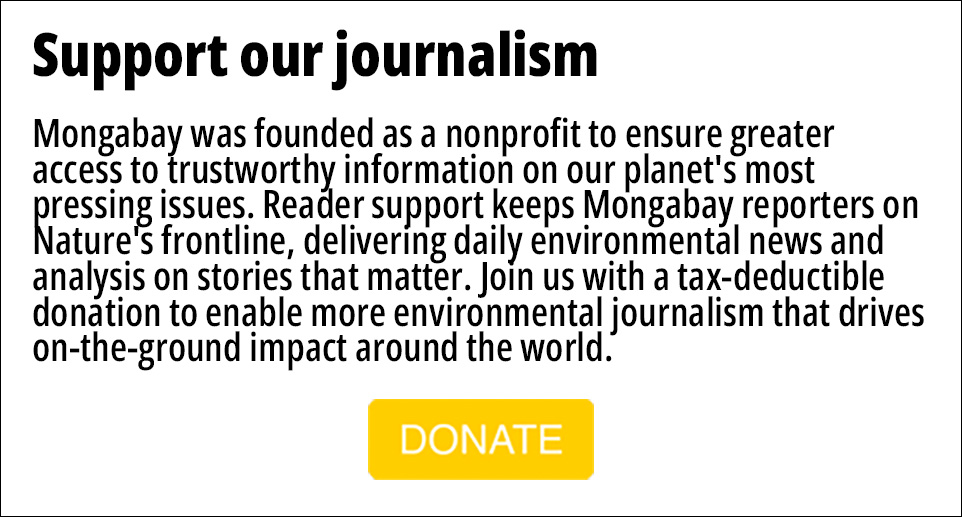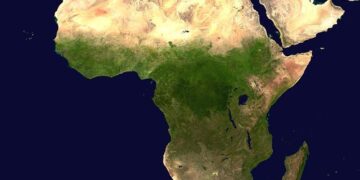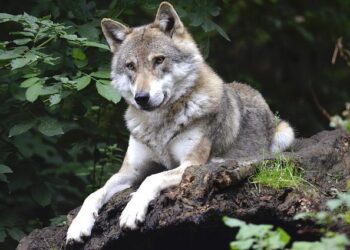Mongabay has begun publishing a new edition of the book, “A Perfect Storm in the Amazon,” in short installments and in three languages: Spanish, English and Portuguese.Author Timothy J. Killeen is an academic and expert who, since the 1980s, has studied the rainforests of Brazil and Bolivia, where he lived for more than 35 years.Chronicling the efforts of nine Amazonian countries to curb deforestation, this edition provides an overview of the topics most relevant to the conservation of the region’s biodiversity, ecosystem services and Indigenous cultures, as well as a description of the conventional and sustainable development models that are vying for space within the regional economy.Click the “A Perfect Storm in the Amazon” link atop this page to see chapters 1-13 as they are published during 2023.
Beef production technology in all other Amazonian regions lags Brazil except for Bolivia, which has largely adopted the Brazilian approach to beef production. Bolivian producers can be classified into two major types, each of which is in a different region: (1) extensive ranches on seasonally flooded natural grasslands in the Beni; and (2) intensive ranches on cultivated pastures in Santa Cruz.
Both groups include large and medium-sized producers, and both have adopted Brazilian breeds and veterinary technology. The ranches in the Beni have very low stocking rates due to the poor forage quality of the native grasses. Consequently, they largely produce calves and immature males (A+B), which are sold to Cruceño producers located closer to population centres and packing plants.
Cruceño producers have embraced the Brazilian production model in its entirety, including the practice of seeding cultivated pasture grasses directly into recently deforested soils. The sector is responsible for about 35 per cent of the total historical deforestation in Bolivia, which amounts to about four million hectares (Human Modified Landscapes HML # 29, #30 and #31).
In 2016, the government ended its decade-long ban on beef exports as part of a strategy to diversify the national economy. China initiated imports from Bolivia in 2019 with an initial purchase of about a thousand tonnes of dressed beef, a volume that increased to 7,900 tonnes in 2020, eighty per cent of total beef exports. The value of those exports in 2020 was $US 42 million, a small but significant number in the rural economy of Santa Cruz. Looking forward, the government hopes to expand that number by a factor of five by 2025; this and other policies have stimulated deforestation, which reached a historical high of 240,000 hectares in 2020.
 Cattle pastures and forest in San Miguelito, Bolivia, during 2019. Image by Rhett A. Butler.
Cattle pastures and forest in San Miguelito, Bolivia, during 2019. Image by Rhett A. Butler.
In Peru and Ecuador, cattle raising is more accurately described as an artisanal activity than a modern production model. Herds are typically a genetic mixture of traditional stock, dairy cows and Brazilian breeds; reproductive rates are low, and mortality is high. Stocking rates are usually below 0.5 head per hectare; forage is of very poor quality and weed infestation is a universal problem. Most pastures are fallow, part of a production system where pastures and second-growth forest occupy a temporal stage in a rotation cycle centered on annual crops.
The economic return on these low-tech cattle production practices is notoriously poor, with a net cash flow of only about $50 per hectare, compared to about $US 300 for maize and $US 850 for cacao. Small farmers in Peru and Ecuador raise cattle on land that has essentially no other economic activity. Cattle are viewed as a liquid asset that accrues value over the short-term and can be monetized easily for medical emergencies or milestone events. Essentially, a savings account with hooves. Both countries have programmes designed to improve productivity, but neither country exports beef, nor are they likely to do so in the near future.
Pastures occupy about 70% of previously deforested land in the Amazon in both countries, but cattle production is not a cause of deforestation; rather, it is a by-product of land clearing by small farmers who grow food crops for national markets or cultivate a perennial cash crop for international markets. There are some exceptions.
In Morona-Santiago Province in Southeastern Ecuador, Schuar and Achuar families adopted cattle farming in the 1970s as a tactic to formalize land tenure. The motivation for clearing the forest was not to pursue cattle ranching as a livelihood but to protect their lands from encroachment by immigrants. They are, nonetheless, an important source of high-quality beef in Ecuador.
 Cattle herds have declined in Venezuela, while expanding in Bolivia and in Colombia after 2016; in both nations, beef production is a major driver of deforestation. Cattle herds are small and stable in Ecuador and Peru; in neither country is beef production a major driver of deforestation. Data source: FAOSTAT and USDA/FAS.
Cattle herds have declined in Venezuela, while expanding in Bolivia and in Colombia after 2016; in both nations, beef production is a major driver of deforestation. Cattle herds are small and stable in Ecuador and Peru; in neither country is beef production a major driver of deforestation. Data source: FAOSTAT and USDA/FAS.
In Colombia, the beef supply chain is more sophisticated than in Ecuador and Peru but still lags the productivity of cattle ranchers in Bolivia and Brazil. In part, this represents the diversity of its rural communities and producers, but it also reflects a lack of investment caused by its decades-long civil conflict. The cattle sector is undergoing profound changes, stimulated in part by the peace process that began in 2016 but also by the free trade agreement with United States that is obligating producers to increase efficiency or lose market share.
Prior to 2010, the Colombian cattle herd comprised about 25 million head, a population that was stable for approximately thirty years. About 55 per cent of the herd was destined for beef and four per cent for dairy operations, with the remainder raised for both milk and meat, a characteristic typical of traditional artisanal systems. The most sophisticated producers were the large-scale ranchers on the natural savannas of the Llanos del Orinoco where native grasses imposed low stocking rates.
In the Andes and on the Caribbean Coast, tens of thousands of small, medium and large-scale producers raised cattle on poor pasturage cultivated on degraded soils.
In the Colombian Amazon, three departments have a legacy of deforestation linked to the cattle industry: Putumayo, Caquetá and Guaviare. The most important, Caquetá, was settled by migrants starting in about 1960 and is now characterized by medium to large-scale cattle ranchers on approximately 1.3 million hectares.
The government and Federación Colombiana de Ganaderos (FEDEGAN) have embarked on an ambitious programme to expand and modernize the cattle sector. The sector is essentially adopting the Brazilian technology and production model, which has led to a sustained increase in the national herd over the last several years. This effort has revitalised the cattle industry in Caquetá, where the cattle herd grew from 1.3 million in 2016 to more than 2.3 million in 2019. The initiative is notable for its intent to create a zero-deforestation production model and most of the expanded production has been obtained by improving animal husbandry and pasture management.
Nonetheless, the Colombian Amazon has experienced an upsurge in deforestation that reached record levels in 2017 (130,000 ha), 2018 (155,000 ha) and 2020 (145,000). The spike in deforestation is often linked to the production of illicit coca, but pastures are being simultaneously established on landscapes where law enforcement is poor and land tenure is characterized by chaos.
 Increasingly, Colombian cattle ranching is following Brazil’s lead and achieving sustained production growth. Image by Rhett A. Butler.
Increasingly, Colombian cattle ranching is following Brazil’s lead and achieving sustained production growth. Image by Rhett A. Butler.
Venezuela has a relatively large cattle sector located in the Llanos del Orinoco, but the country still imports about forty per cent of its national consumption – or did prior to the economic crisis that became particularly acute after 2016. Government-generated statistics show a stable herd, but unofficial sources report a drop of about 45 per cent. Regardless, the Amazonian region has never developed an economically significant cattle industry.
Similarly, Guyana and Suriname have minuscule cattle sectors and no history of deforestation linked to the cattle industry. Roraima in Brazil has a moderate-sized cattle industry based on its native savanna with about 880,000 head; nonetheless, the municipality with the largest population of cattle is Mucajaí (100,000 head), a heavily deforested smallholder landscape located south of the state capital of Boa Vista.
“A Perfect Storm in the Amazon” is a book by Timothy Killeen and contains the author’s viewpoints and analysis. The second edition was published by The White Horse in 2021, under the terms of a Creative Commons license (CC BY 4.0 license).
Read the other excerpted portions of chapter 3 here:

Article published by Mayra
agribusiness, Agriculture, Amazon Agriculture, Amazon Biodiversity, Amazon Conservation, Amazon Destruction, Amazon People, Amazon Rainforest, Community Development, Conservation, Deforestation, Development, Environment, Forests, Rainforests, Sustainable Development, Threats To Rainforests, Threats To The Amazon, Tropical Forests
>>> Read full article>>>
Copyright for syndicated content belongs to the linked Source : MongaBay – https://news.mongabay.com/2023/10/livestock-farming-in-the-andean-amazon-and-the-rest-of-the-amazon/































